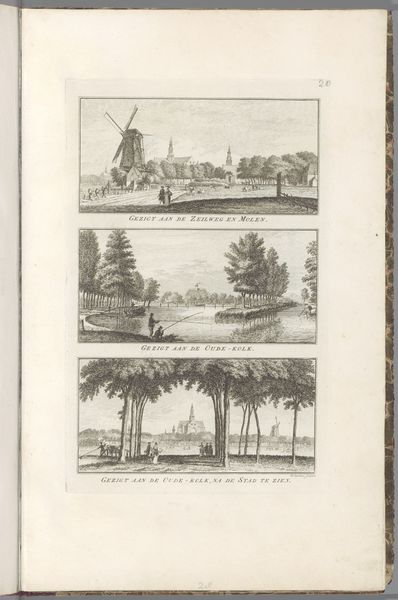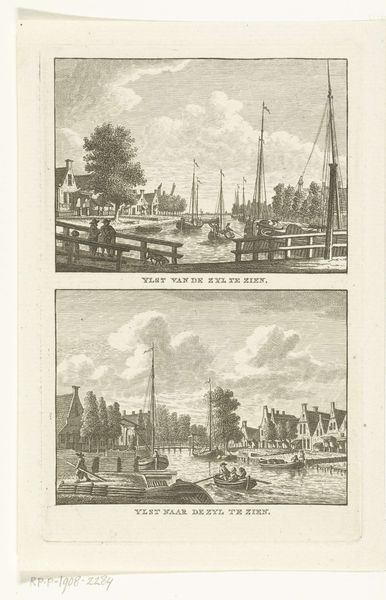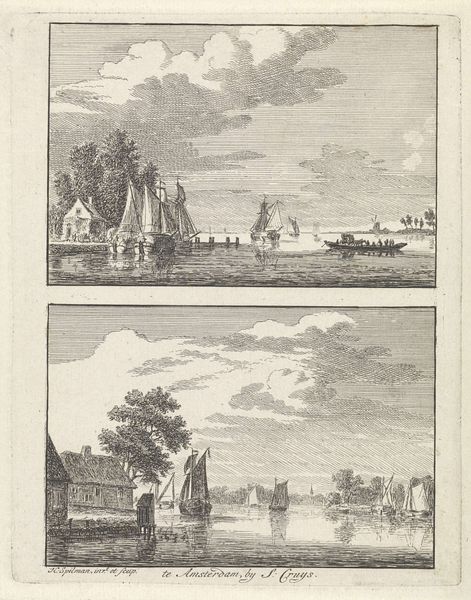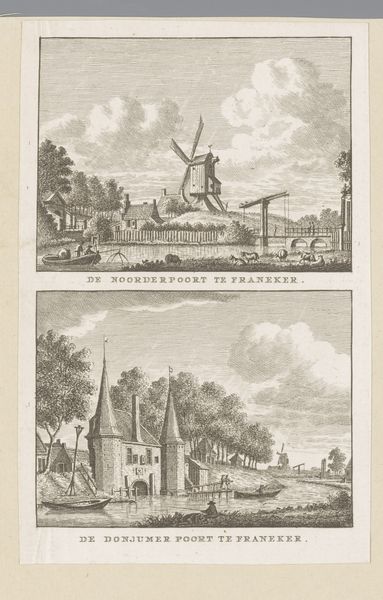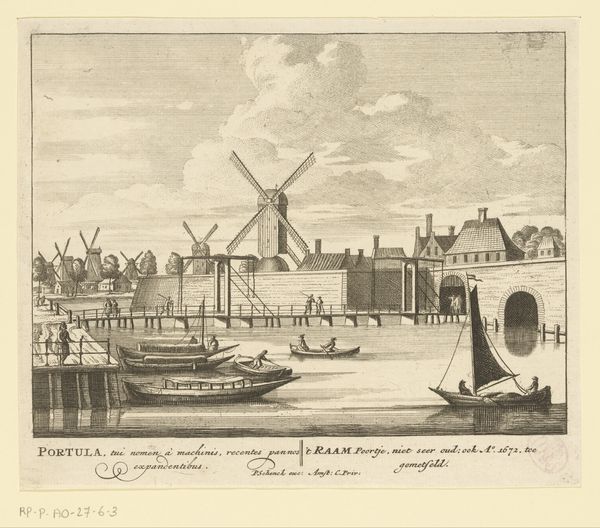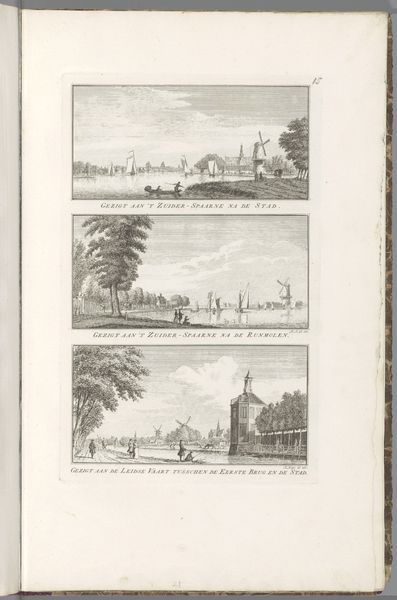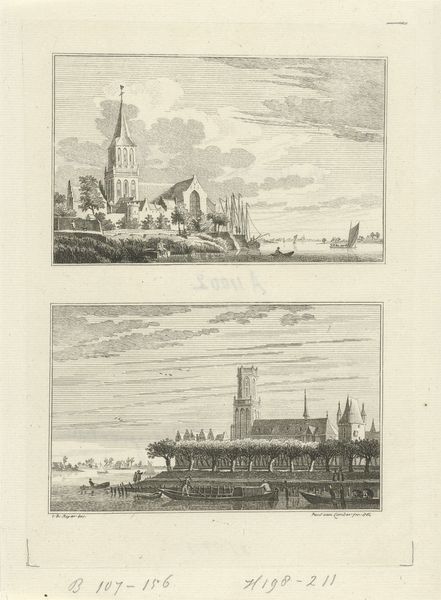
Gezicht op de Purmerpoort en gezicht op de Beemsterpoort te Purmerend 1786 - 1792
0:00
0:00
carelfrederikibendorp
Rijksmuseum
print, engraving
#
dutch-golden-age
# print
#
landscape
#
line
#
cityscape
#
engraving
Dimensions: height 170 mm, width 111 mm
Copyright: Rijks Museum: Open Domain
Curator: This engraving, dating from around 1786-1792, presents us with two views of Purmerend's city gates, the Purmerpoort and the Beemsterpoort. The artist is Carel Frederik Bendorp. Editor: There's such a striking simplicity. The meticulous line work really focuses my attention on the textures of the buildings and the way the light hits the water. You can almost feel the breeze off the canal. Curator: Exactly. Bendorp was documenting the civic architecture, producing these prints to disseminate images of recognizable local landmarks for public consumption, shaping a sense of local identity and civic pride. Editor: That connection to the locale is so strong. Engravings like this weren't just art objects; they were products made accessible. It’s interesting how printmaking democratizes imagery. We see the means of production influencing accessibility. Curator: Very true. Consider the impact this had on how Purmerend presented itself. Prints like these were essentially marketing the town, controlling and framing how the public at large perceived it. The images broadcast Purmerend's self-image, as a center of trade and culture, within the Netherlands. Editor: I see how it served the civic order. The uniformity achieved through engraving, these repetitive lines, speaks to a broader mechanized approach, and allowed the views to circulate far beyond paintings. The details and labor poured into those minute lines…the scale of it! Curator: Indeed, they are far removed from, say, grand oil paintings of the same era and that shifts the narrative of access and public consumption substantially. And engravings also played a vital role in cartography, urban planning, and even in circulating political propaganda. These humble-seeming prints had a grand function in society. Editor: This piece made me really consider the social and economic implications inherent to the medium itself, as much as the subject of the gates, the image is such an interesting record of 18th century labor and commerce. Curator: Looking closely helps me recognize that this isn't merely an aesthetic rendering. Bendorp and his prints played an active role in defining and distributing Purmerend's image to its public. Editor: I agree, analyzing it through its physical presence allows me to really focus on its legacy.
Comments
No comments
Be the first to comment and join the conversation on the ultimate creative platform.
